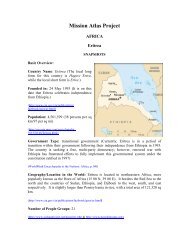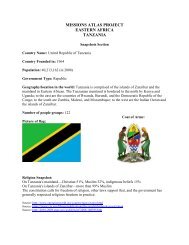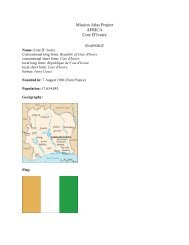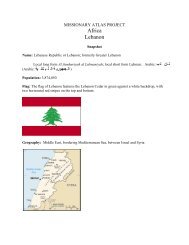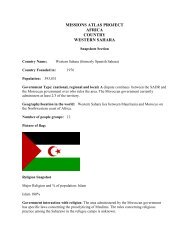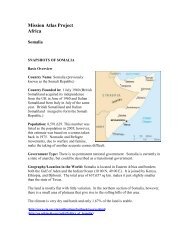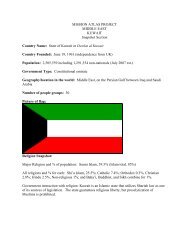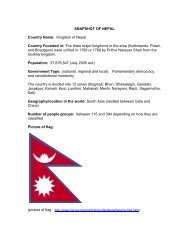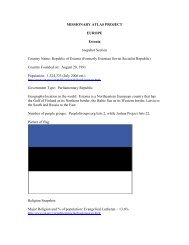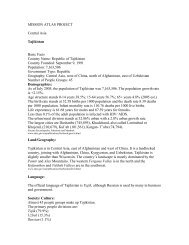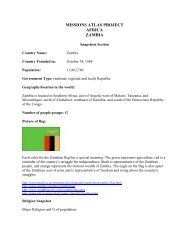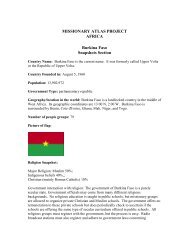ARUBA Profiile.pdf - WorldMap
ARUBA Profiile.pdf - WorldMap
ARUBA Profiile.pdf - WorldMap
You also want an ePaper? Increase the reach of your titles
YUMPU automatically turns print PDFs into web optimized ePapers that Google loves.
predominately takes care of the children. In family affairs the oldest child (yui mayo) has special<br />
influence on situations of decision making and conflict. As a result of patri- or matrilocal<br />
settlement, groups of brothers and/or sisters and their spouses traditionally lived near each other<br />
on family grounds.<br />
Until the beginning of the 20 th century, the centers of kinship organization were the extended<br />
family and the conjugal nuclear-family household (marriage between close kin was common.) A<br />
shortage of land and urbanization caused a decrease in patri- and matrilocal settlement and the<br />
weakening of the traditional type of kinship organization.<br />
Massive migration and shortage of adequate housing are the cause of number of social tension<br />
and resentment. Kinship terminology parallels that of Catholic canon law – ritual kinship<br />
focuses around the godparents (the padrino and madrina), who have clearly defined obligations<br />
regarding the godchild‟s baptism, first Holy Communion, and marriage. Though the kin group is<br />
the focal point of social interaction, it is also the biggest source of social conflict.<br />
Arubans social life happens within the family and social organizations as well as at school. The<br />
most important organizations are sports and service clubs, scouting associations, community<br />
centers, as well as religious and professional organizations. Even though Aruba is divided along<br />
class, ethnic, and geographical lines, and the gap between rich and poor is significant, class lines<br />
are loosely defined.<br />
Recent migration has created new boundaries between newcomers and older ethnic groups.<br />
Ethnic and geographical divisions can be seen in labor specialization, patterns of marriage and<br />
settlement, choice of language, and political affiliations. Society allows, on the small scale,<br />
gossip to be an effective means of social control even including newspapers to be carriers of<br />
gossip.<br />
Traditional semi-religious ceremonies have a Catholic religion or orientation. Small bends<br />
singing a serenade called Dandé deliver best wishes to the homes on New Year‟s Eve. June 24 th ,<br />
St. John‟s Day, is celebrated with bonfires and the ceremony of Dera Gai (the burying of the<br />
rooster; at the present day the ceremony is carried without the rooster.) Easter Monday is called<br />
Black Monday that originates for the yearly picnic held by Afro-Caribbean Methodists. The<br />
present day observers of the tradition camp-out for up to a week at the beach in tents and shacks.<br />
Arubans make of special importance the celebrations of an individual‟s 15 th , 50 th , and 75 th<br />
birthdays.<br />
Most family doctors and medical specialists have been educated in the Netherlands, in the United<br />
States, or in South America. Though some of the traditional healing methods are legally<br />
forbidden, modern natural healing methods have been growing in popularity. Healing methods<br />
(Papiamento – remedi di tera) make use of herbs, amulets, etc., which are practiced by curadó or<br />
curioso (healer), who often also acts as hacido di brua (practitioner of brua – brua as a<br />
magician.)<br />
The newspapers circulate in different languages: 4 in Papiamento, 2 in Dutch, and 3 in English.




